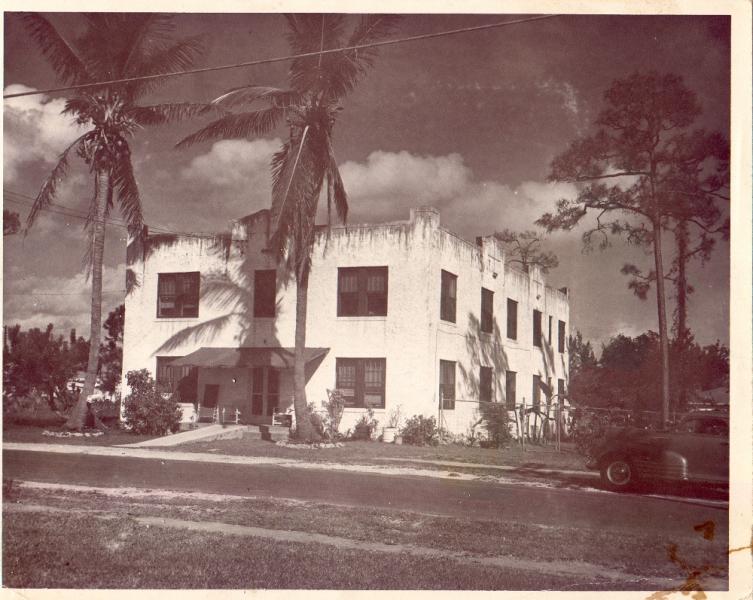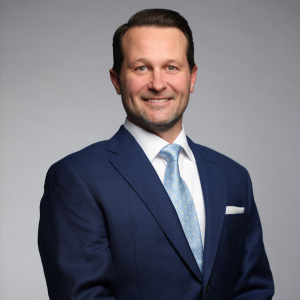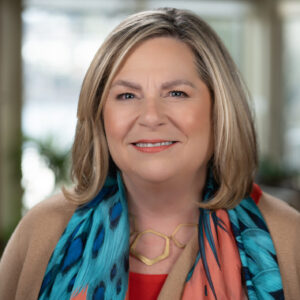Family-owned SNFs: Can they survive?
Ten years ago one of the 12 Bortz family-owned nursing home facilities in Michigan won this magazine’s annual OPTIMA Award for an activities program protecting residents from dementia-related “sundowning” (the disruptive burst of energy residents can experience in the early evening hours). At the award ceremony held at the facility, Donald “Jim” Bortz III, was immediately swamped by residents wanting to talk with him and shake his hand. If ever there was a “rock star” reception for someone in long-term care, it happened that day—my only such experience in my (then) 11 years of editing the magazine.
After the ceremony I asked Bortz for his thoughts on owning and operating nursing facilities. His grandfather Donald Bortz had founded the organization in 1958 and his father D.J. Bortz, Jr. had subsequently grown the company. Bortz said he missed the days when he, his father and grandfather would sit on a veranda and talk with the residents. “I’d still like to do that but they’re [the residents] so much sicker now.”
It was emblematic of the evolution nursing homes have experienced over the years. Caregiving challenges have grown to the point that many nursing facilities are wondering whether they will have the resources to meet them. And in no sector of long-term care is that concern more profound and poignant than in the family-owned facility. These providers face ever-growing regulatory red tape and competition from deep-pocketed chains, as well as reimbursement challenges of unprecedented scope. Their challenges are the same as those confronted by corporate chain organizations, but family-owned facilities don’t command the same organizational depth or resources. Can and will they survive?
Recently I visited with heads of several family-owned organizations and asked how they were faring these days. The results were both rewarding and worrisome.
GROWING UP IN LONG-TERM CARE
Take, for example, Kelley C. Rice-Schild, whose great-grandmother Florence Dean opened Floridean Rest Home (Today, The Floridean Nursing and Rehabilitation Center) in Miami in 1944. Her story touches on every aspect of the “family-owned” saga. Rice-Schild grew up learning about and volunteering in the family business managed by her grandfather Jack Rice, Sr., which eventually grew to 60 beds, and helped her grandmother Julia Rice and father Frank Rice manage the nursing home until becoming administrator in 1997. Responding to an increasing demand for post-acute services, she has been “staying ahead of the curve” on Medicare ever since, adding a 30-bed Medicare-only unit two years ago. Today her resident population is 60 percent Medicare, with the rest evenly divided between private-pay and Medicaid.
Rice-Schild finds herself gearing up for more business adventures. On the horizon are the accountable care organizations, participation in her area’s Regional Health Information Organization and the imminent start of Medicaid managed care in Florida. For the new Medicare requirement to help hospitals reduce their re-hospitalization rates, Rice-Schild plans to hire an advanced nurse practitioner to oversee that effort. Whether her company succeeds in all this is pretty much her own personal responsibility.
 |
| Floridean Rest Home, 1944 |
Through it all, Rice-Schild maintains that the long-time family connection is a definite advantage for her facility and for the community. “We get calls at least once a week from someone who knew my family or whose mother had stayed here at one time or another. They often call me directly because they’re going through a traumatic time trying to manage a long-term care crisis in the family and I help them any way I can, whether they come here or not.”
Bob Van Dyk, owner of Van Dyk Health Care in Ridgewood, N.J., and immediate past-chair of the American Health Care Association (AHCA), offers a similar story. His company was founded as the family business in 1953. “My dad was a nurse and handled the nursing,” Van Dyk says. “My grandfather was a butcher and my grandmother did all the cooking, so that was food service, and my mom was the bookkeeper. I was a baby and served as the activities program—residents played with me and helped raise me. I remember that after church we’d go to the facility for Sunday dinner, and spent every Sunday and every holiday there. I worked at virtually every level of the facility, including nurse’s aide, when I was growing up.”
Ann Briody Petock is the third generation of her family to oversee the Briody Health Care System in Lockport, N.Y., now in its 65th year of operation. Starting in a conventional two-story home, Briody became a freestanding 82-bed facility in 1971.
And Ian Cordes, a nationally known LTC expert who has managed professional organizations for medical directors, directors of nursing and directors of social services in Florida, got his start as a dishwasher in his father’s assisted living facility in 1971. Having sold the family business in the mid-1980s, Cordes says he still retains his licenses in “the profession I love.”
Bobby Rosenthal, active in AHCA at the national and Florida chapter levels, says he was one of Florida’s first “latchkey kids,” walking to his family’s Miami-based facility every day after school. His father and mother worked as administrators seven days a week and parts of every holiday and heard conversations about long-term care at the family dinner table. Although that business, too, was sold in the ’80s, he says that “you develop a love for the industry that doesn’t stop, and see it not as just a job, but as something for which you have pride of ownership.”
EXPANDING SERVICES
The family organizations still in operation have all confronted major challenges to survival. “We’ve evolved much more to what hospitals did years ago,” says Van Dyk. “For example, we opened a cardiac transition program overseen by a cardiologist and now employ a cardiac nurse practitioner. Our admissions overall are much more short-term and frequent—while before we were doing 60 admissions a year to our traditional facility, now we’re now doing 60 a month—with an average length of stay of 21 to 27 days for cardiac and hip and knee replacement rehab. And we are providing home care for discharged residents, including a new home care service for cardiac patients. We also provide assisted living in a separate facility. In general, diversified services are a critical component for LTC providers these days, and it’s to the point where it’s almost inaccurate to call us a nursing home company anymore.” For the family-owned facility, though, diversification is achieved on a relatively small platform.
Petock notes that in 1995, her facility started providing independent physical, occupational and speech therapy programs. “We found that the patients didn’t want to be comingled with the LTC residents so, in 2000, we added a rehab kitchen and dining room, a teaching bathroom for tub and toilet transfers and a new, specialized rehab staff.”
Bortz notes that despite the increased clinical burdens his LTC residents experience, “our family continues to enjoy caring for the elderly. We do not evict people because of insurance or coverage changes, we charge one rate for all services and we don’t nickel-and-dime people with a la carte charges. We also treat staff as family—something my dad and grandfather drilled into us over and over. We’ve had very low staff turnover—in the single digits.”
Van Dyk also places great emphasis on appreciating staff, recognizing their contributions and minimizing turnover. “They’re our greatest resource—we have staff who have been with us 20 years and more.”
COMMITMENT TO QUALITY
Like Rice-Schild, Van Dyk sees family ownership as a plus in community recognition. “I’m 58, my dad is 81, and we’ve lived here all our lives. We meet people in church, at the hardware store and the grocery store, and we have a sense of responsibility to our community.”
Their commitment to quality shows. Medicare’s Nursing Home Compare data on these facilities shows that the family-to-family model of providing this most personal of healthcare services really works. That makes the threats these organizations face all the more poignant.
MEETING THE CHALLENGES
The infamous 11.1 percent Medicare cut enacted this past fall, which for some of these organizations is closer to 15 percent, is taking its toll as much on family-owned facilities as any. “We’ve had to make staffing adjustments,” says Bortz, “mostly from housekeeping, dietary and maintenance rather than hands-on staff, and the executives are taking a hit, too.” Van Dyk is also considering similar staff cuts, and is postponing major capital improvement projects.
However, Petock finds the Medicare cuts not as impactful in her neck of the woods “because we’re already under Medicare managed care, with three major HMOs involved in western New York.” Adding to the challenge, she notes, is a pilot program by the Visiting Nurse Association and local hospitals that is increasingly transferring rehab cases to home care.
STAY THE COURSE?
Family ownership has become “a very tough field,” says Bortz, “and I don’t know how single-facility owners do it. More and more of them are selling out, and we’re approached every year with at least one or two highly attractive offers along these lines. But we have the responsibility of many lives to support, not just residents but staff.”
Van Dyk echoes that: “I’ve had to make decisions that were difficult, particularly investing in additional staff who are focused solely on collecting the data we need for reimbursement and regulatory compliance. I did this because any facility without a real handle on its costs is probably going under. We’re doing well but, from my point of view, this is probably the greatest challenge for the family-owned operation.
But Van Dyk also sees the industry-wide pressure to merge or sell as constant and growing. “Every time government creates a new demand on the reimbursement system, family-owned providers are getting out. You hear them saying, ‘I’ve done this for 40 years and I don’t need this anymore—it just isn’t as much fun.’”
The message seems to be filtering through to the younger generations who, according to most of the owner-families I spoke with—Bortz being an exception—are not taking up the family business like they used to. They’re not seeing a future in it. Petock predicts, though, that “there will be a shortage of beds even at the skilled level in a few years, even with the growth of assisted living and independent living. Meanwhile, we’ll be as frugal as possible, running a tight ship while trying to be fair to our staff and maintaining good staff ratios.”
That’s a simple formula for maintaining a family presence in long-term care. But the true spirit of this caregiving enterprise, as exemplified by these facilities, remains very much under a cloud.

Richard L. Peck was editor in chief of I Advance Senior Care / Long-Term Living for 18 years. For eight years previous to that, he served as editor of the clinical magazine Geriatrics. He has written extensively on developments in the field of senior care and housing.
Related Articles
Topics: Articles , Facility management , Leadership











